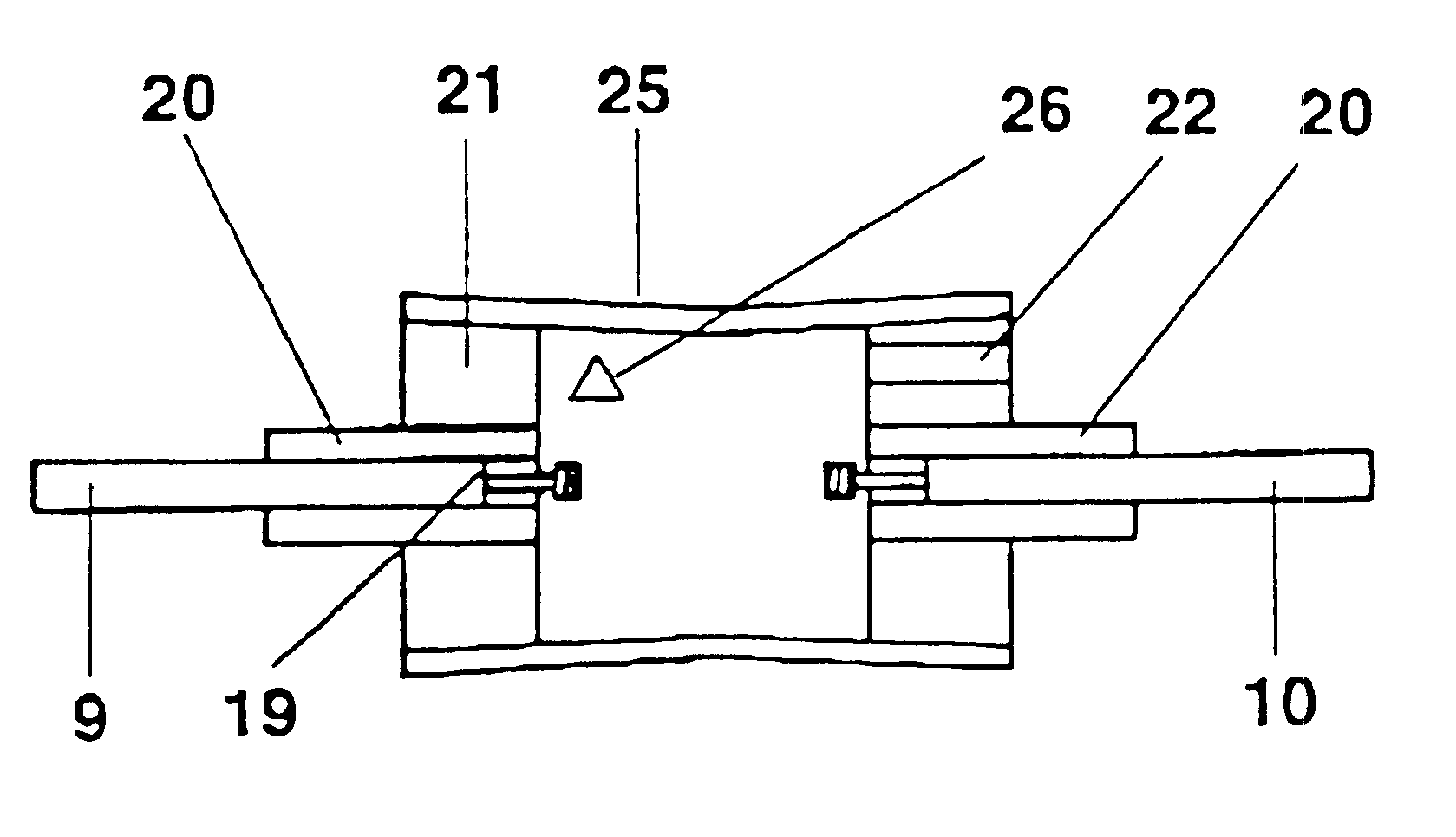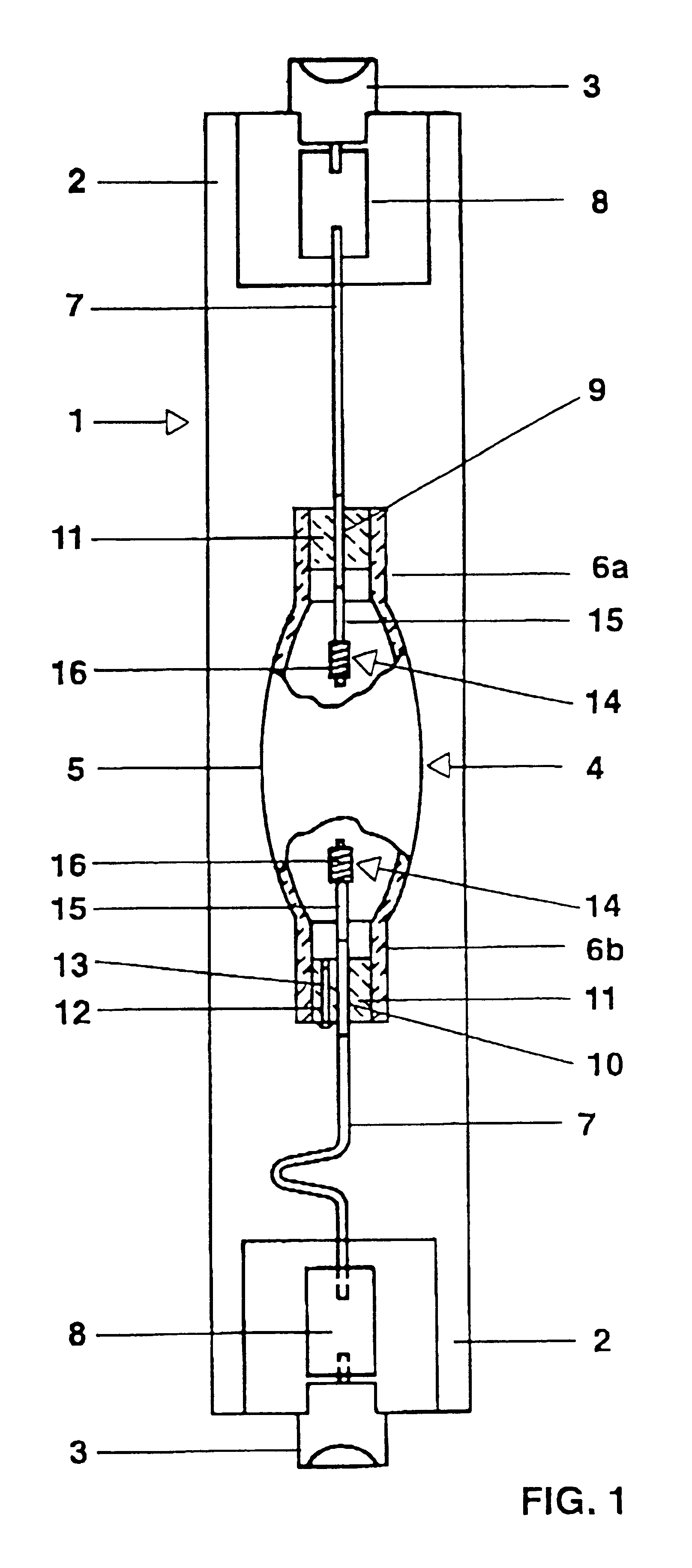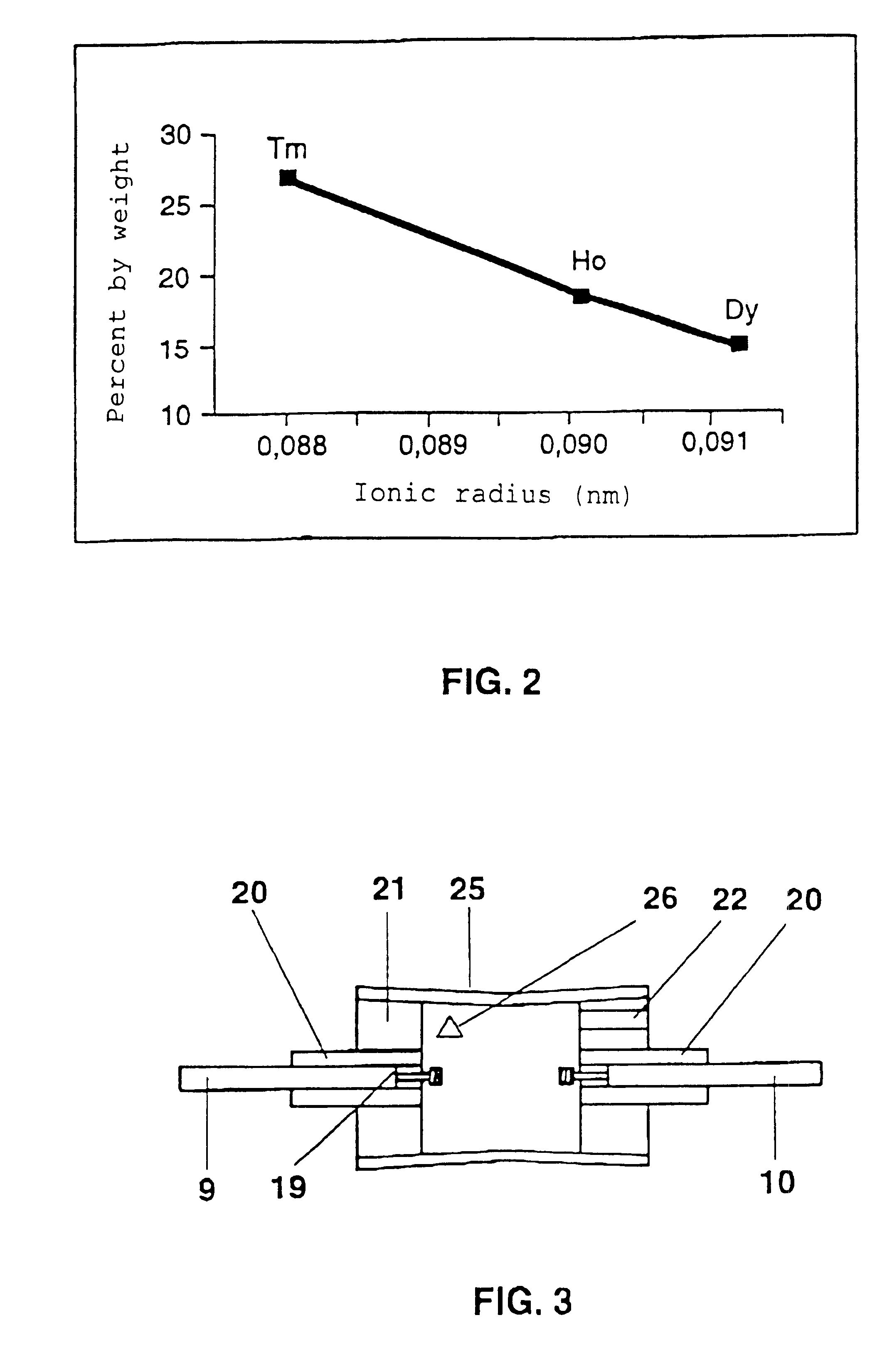Metal halide lamp with fill-efficient two-part lead-through
a metal halide lamp and lead-through technology, applied in the direction of electric discharge lamps, solid thermionic cathodes of discharge tubes, electric electrodes/cathodes, etc., can solve the problems of large proportion of ions, affecting the effect of ion exchange, and becoming bonded
- Summary
- Abstract
- Description
- Claims
- Application Information
AI Technical Summary
Benefits of technology
Problems solved by technology
Method used
Image
Examples
first embodiment
In a first embodiment, the rare-earth metal oxides which are used for the cermet component comprise the oxides of one or more or even all of the rare-earth metals which are contained in the fill.
second embodiment
In a second embodiment, the rare-earth metal oxides comprise the oxides of one or more rare-earth metals which are not contained in the fill, in particular Y.sub.2 O.sub.3.
third embodiment
In a third embodiment, a mixture of the first two embodiments is used. In a particularly preferred embodiment, the combination of the ceramic base material with one or more rare-earth metal oxides corresponds to a garnet or perovskite or a mixture of the two. Oxides of La, Nd, Sm, Eu or Gd are preferably used as the perovskite. Oxides of Lu, Yb, Tm and Y are preferably used as the garnet. The remaining rare-earth metal oxides are particularly suitable for both structures and their mixtures.
It is particularly simple and effective for the rare-earth metal oxide used to be predominantly or exclusively an oxide of a rare-earth metal with the smallest possible ionic radius, since it appears that the ions of these rare-earth metals diffuse preferentially into the ceramic phase of the cermet component. In particular, it is sufficient to use a single rare-earth metal oxide with an ionic radius which is less than or equal to the ionic radius of that rare-earth metal ion in the fill which has...
PUM
 Login to View More
Login to View More Abstract
Description
Claims
Application Information
 Login to View More
Login to View More - R&D
- Intellectual Property
- Life Sciences
- Materials
- Tech Scout
- Unparalleled Data Quality
- Higher Quality Content
- 60% Fewer Hallucinations
Browse by: Latest US Patents, China's latest patents, Technical Efficacy Thesaurus, Application Domain, Technology Topic, Popular Technical Reports.
© 2025 PatSnap. All rights reserved.Legal|Privacy policy|Modern Slavery Act Transparency Statement|Sitemap|About US| Contact US: help@patsnap.com



